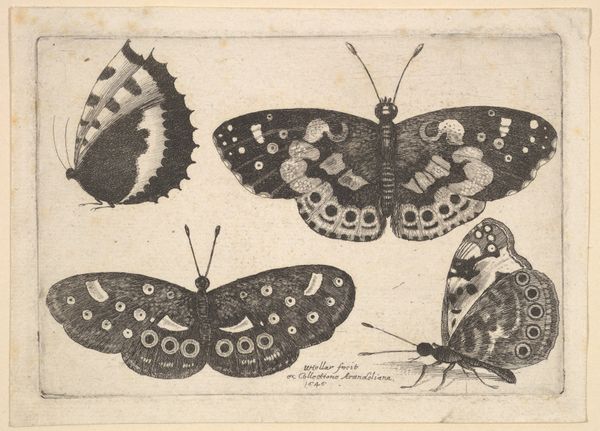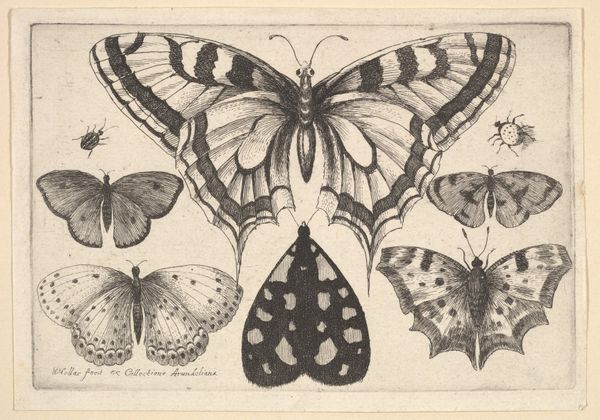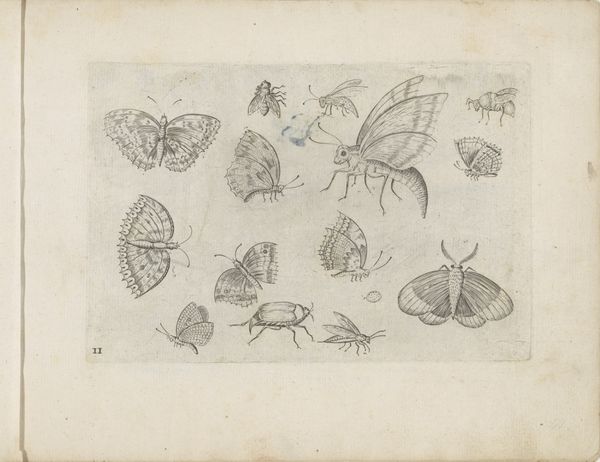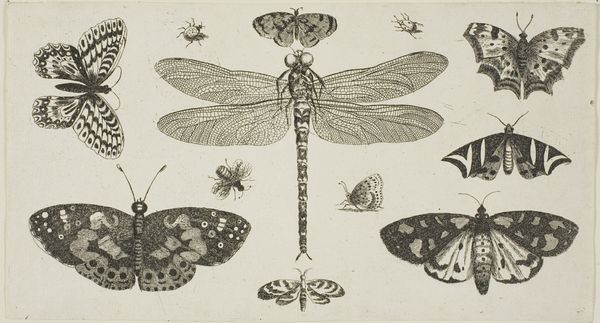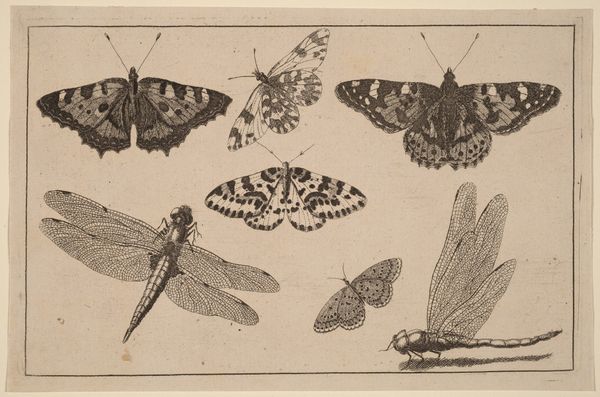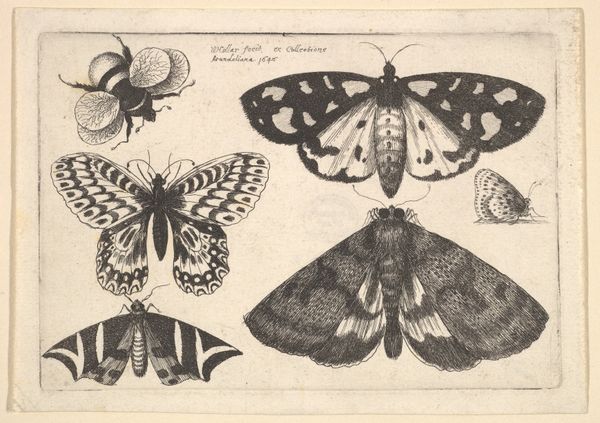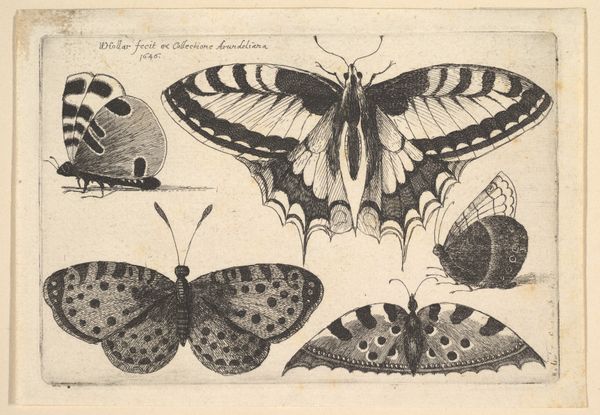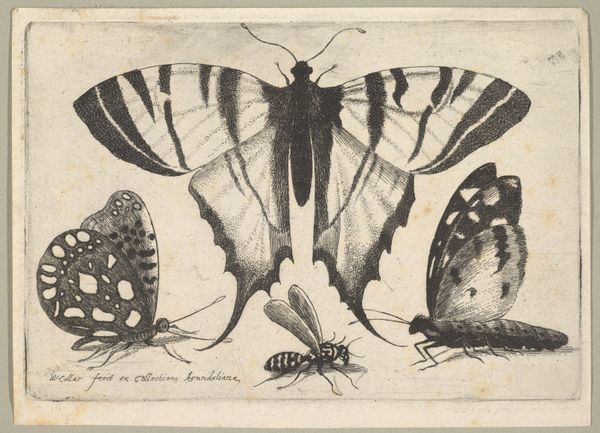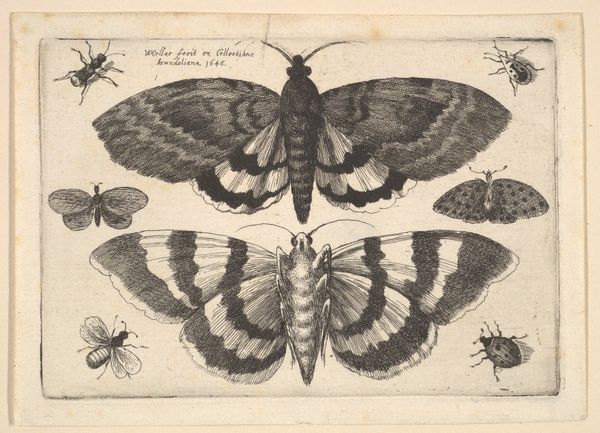
Three Caterpillars, a Moth, and Four Butterflies 1644 - 1652
0:00
0:00
drawing, print, etching, ink, engraving
#
drawing
# print
#
etching
#
ink
#
engraving
Dimensions: plate: 11.8 × 18.2 cm (4 5/8 × 7 3/16 in.) sheet: 12.7 × 19.2 cm (5 × 7 9/16 in.)
Copyright: National Gallery of Art: CC0 1.0
Curator: Immediately striking! The level of detail given to each specimen is simply incredible for the period. Editor: Agreed! It's interesting how Hollar has isolated each of these creatures against a plain background, as if they are specimens under observation. It speaks volumes about the scientific gaze and the beginnings of entomology during this period. Curator: Exactly! Wenceslaus Hollar produced "Three Caterpillars, a Moth, and Four Butterflies" between 1644 and 1652 using etching and engraving. Think of the skill, time, and the specific labour it would take to produce something like this. The subtle variations in line weight achieved through different engraving techniques speak volumes of his production processes. Editor: Indeed. And looking closer, the choice of insects themselves is intriguing. These insects, so closely associated with transformation and change, may resonate on a deeper level with ideas of identity, perhaps the shifting roles of women during that period or the transformation through religious enlightenment and self-discovery. Curator: Well, it definitely pushes against the idea of art as purely aesthetic and considers it through this intersection with science, labour, and material skill. Consider that the paper itself had to be carefully made. Editor: Yes, the print exists as a multiple, disrupting any singular, fixed identity. Its relative affordability, thanks to the medium of printmaking, made such imagery accessible to a broader audience than painting, democratizing access to nature in some ways. Curator: So what appears simple actually reflects Hollar's incredible skill, not just as an artist but as an interpreter and translator of nature. Each careful stroke represents labour but also, by producing prints, also makes this "art" more affordable, disrupting typical production models for artworks at this time. Editor: That's fascinating to consider. Thinking about our contemporary context, the drawing raises critical questions around how we value labour, the relationship we have with the natural world and how ideas of change and personal transformation may be reflected through something as small as a butterfly's wing. Curator: Thinking through the materials and means of production sheds new light on the intentions of the artist and its impact. It really gives us food for thought on art's role in our daily life. Editor: Absolutely. It pushes us to consider artwork within social, political, and economic narratives, making us question its impact on identity formation, knowledge dissemination, and potentially, even social action.
Comments
No comments
Be the first to comment and join the conversation on the ultimate creative platform.
